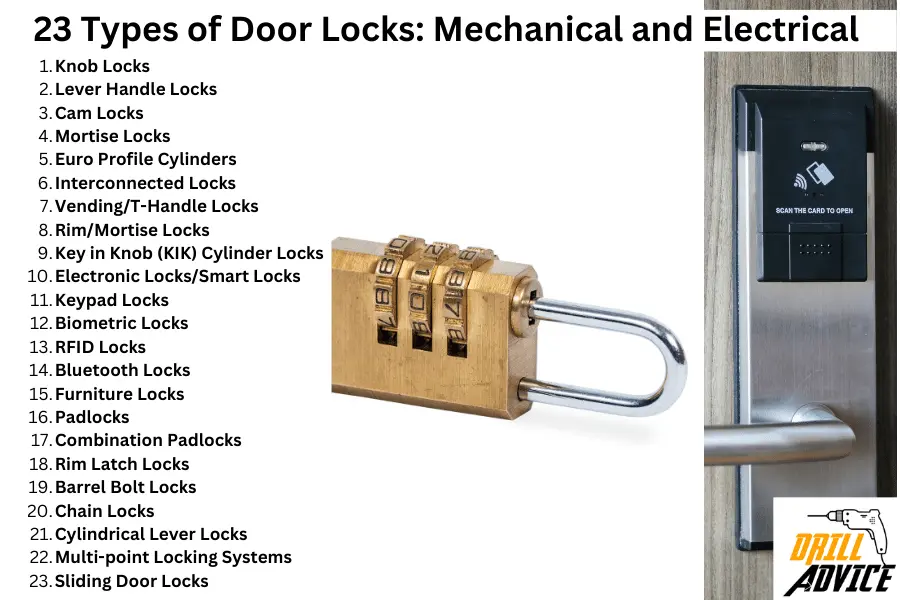
The door lock is a mechanical or electronic mechanism that can secure a door. Door locks prevent unauthorized access through the door without. The door lock is operated by using a key. Door locks are mainly two types. Those are mechanical and electrical locks. A mechanical lock can be operated by using a key. But smart locks can be operated using a numerical code, biometrical sign, voice command or using an app.
Below are the most popular 23 types of door locks.
- Knob Locks
- Lever Handle Locks
- Cam Locks
- Mortise Locks
- Euro Profile Cylinders
- Interconnected Locks
- Vending/T-Handle Locks
- Rim/Mortise Locks
- Key in Knob (KIK) Cylinder Locks
- Electronic Locks/Smart Locks
- Keypad Locks
- Biometric Locks
- RFID Locks
- Bluetooth Locks
- Furniture Locks
- Padlocks
- Combination Padlocks
- Rim Latch Locks
- Barrel Bolt Locks
- Chain Locks
- Cylindrical Lever Locks
- Multi-point Locking Systems
- Sliding Door Locks
1. Knob Locks
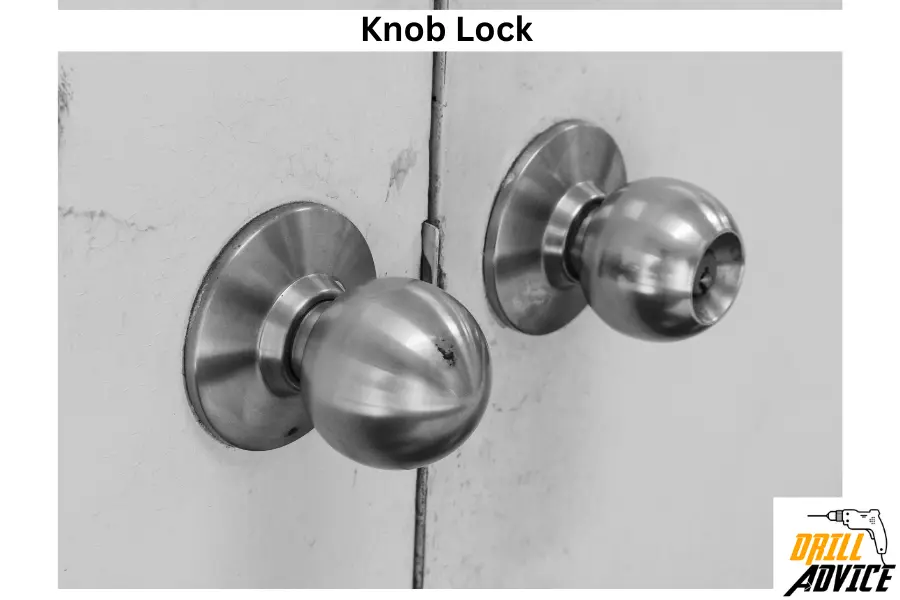
Knob locks are common types of door locks where the lock cylinder is situated inside the knob itself. These locks are predominantly used in residential settings on the exterior doors, often accompanied by a deadbolt for extra security.
User experience of knob lock
- Knob locks are easy to install and use, these locks offer basic security and accessibility. However, they might not provide substantial security when used alone.
Maintenance of knob lock
- Knob locks require regular cleaning to prevent dust and grime buildup.
- Knob locks should be lubricate the locking mechanism regulary to ensure smooth operation.
2. Lever Handle Locks
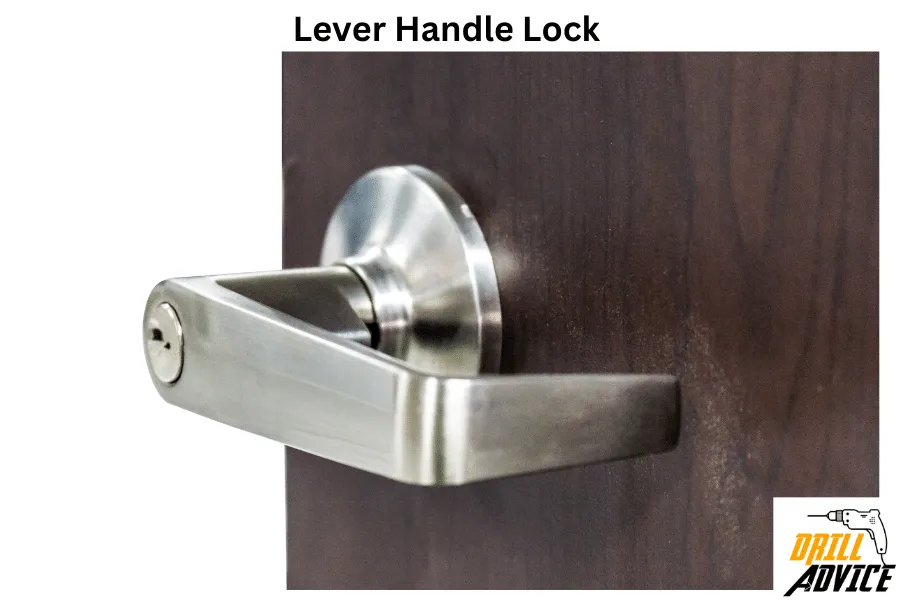
Lever handle locks consist of a lever handle and a deadbolt, offering a straightforward and ergonomic method to open and secure doors. Lever handle locks are commonly used in commercial settings like offices or in residences for indoor rooms, as they comply with the Americans with Disabilities Act (ADA) requirements.
User experience of lever handle lock
- Lever handle locks offer an easy grip. This grip help to operate the lock easily for children and the elderly. The lever design allows for a more natural push or pull motion compared to turning a knob.
Maintenance of lever handle lock
- Lever handle locks should be lubricated properly and checked for loosening levers.
- The lever handle lock should be inspected periodically for wear and tear
3. Cam Locks
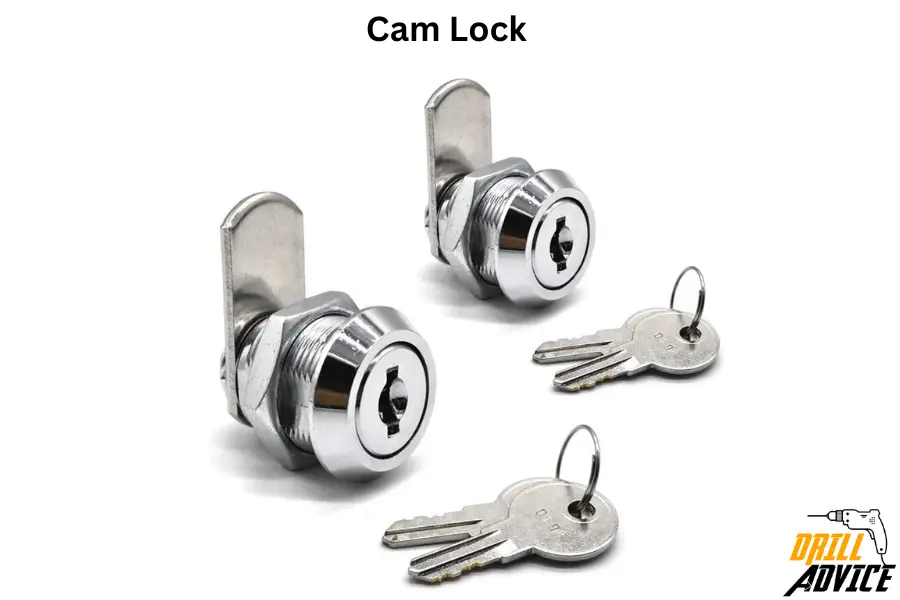
Cam locks are a type of fastening device featuring a base and a cam arm; the arm turns as the key rotates, securing the lock. Cam locks are widely used in filing cabinets, mailboxes, and lower-security doors. Cam locks are offering a moderate level of security to safeguard belongings or restrict access to certain areas.
User experience of cam lock
- Cam locks offer a simple and efficient locking solution. Cam locks are usually operated with a key. Due to its straightforward mechanism, cam lock provides a smooth user experience for locking and unlocking.
Maintenance of cam lock
- Cam locks should be cleaned for dust and lubricated for smooth operations.
4. Mortise Locks
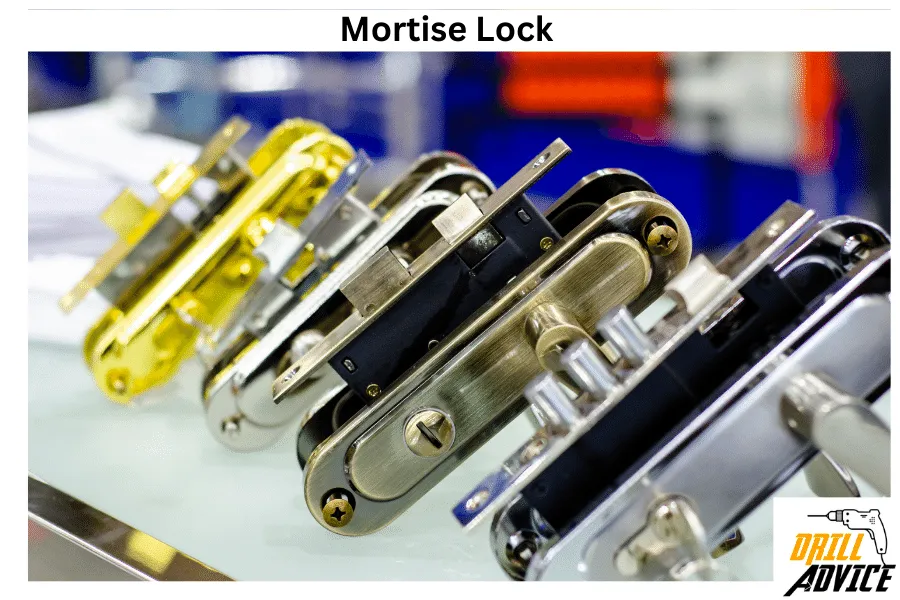
Mortise locks are a type of lock set into a pocket or “mortise” within the door. Mortise lock mechanism is consisting of a flat rectangular box housing. Mortise locks are typically found in older residential buildings, commercial properties, and institutional establishments, owing to their durability and higher security level compared to some other lock types.
User experience of mortise lock
- Mortise locks provide a solid and secure locking mechanism. Mortise locks are generally used in combination with a handle or knob, making them easy to operate.
Maintenance of mortise lock
- Mortise locks should be checked for the alignment of the lock with the strike plate and oiling the internal mechanism periodically to ensure smooth function.
- Mortise locks should be lubricated due to their robust build. Because it can corrode with water and it will clog the inside.
5. Euro Profile Cylinders

Euro profile cylinders, also known as Euro cylinders, are a type of lock with a cylinder shape. Euro cylindrical locks are often used in uPVC and composite doors. Euro cylinder locks are easy to replace without changing the boltwork. These are widely used in residential properties, especially in European countries, both in exterior and interior doors, as well as in some commercial setups.
User experience of euro profile cylinder lock
- Euro profile cylinder locks offer a user-friendly experience, with easy key insertion and operation.
Maintenance of euro cylinder lock
- You should lubricate the cylinder for smooth movements using a suitable lock lubricant.
- Use anti-snap variants to prevent lock-snapping issues for enhanced security.
6. Interconnected Locks
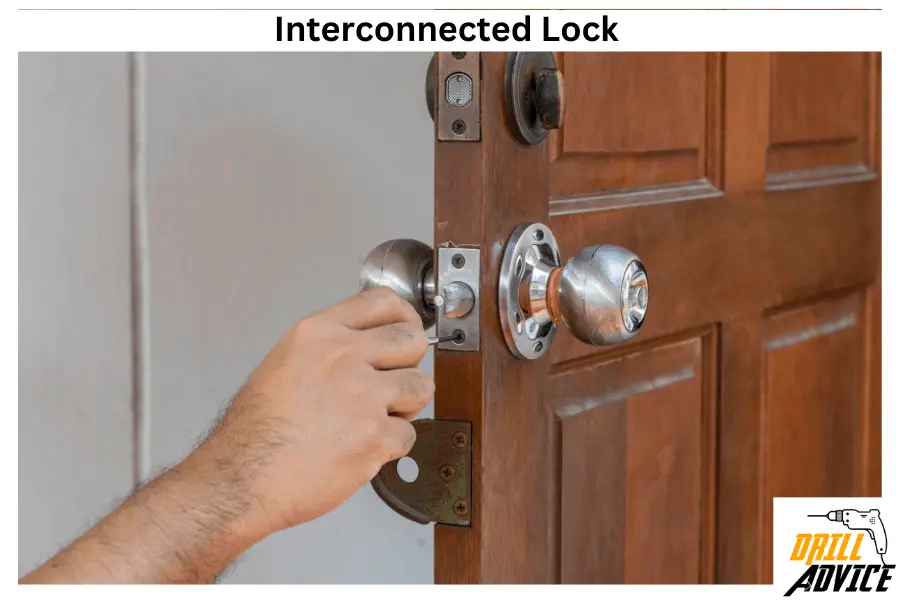
Interconnected locks are integrated units that feature a latch and a deadbolt, which can be operated simultaneously from a single action. Interconnected locks increase the ease of egress during emergencies. Interconnected locks are commonly used in commercial buildings and multi-family residences, where quick and easy escape is essential.
User experience of interconnected lock
- Interconnected locks are convenient because they can unlock both the deadbolt and the latch with a single action. Hence it making exit faster and easier in emergencies.
Maintenance of interconnected lock
- Need to check the alignment and functioning of both the latch and deadbolt.
- Necessary replacements should be done promptly to maintain safety standards.
7. Vending/T-Handle Locks
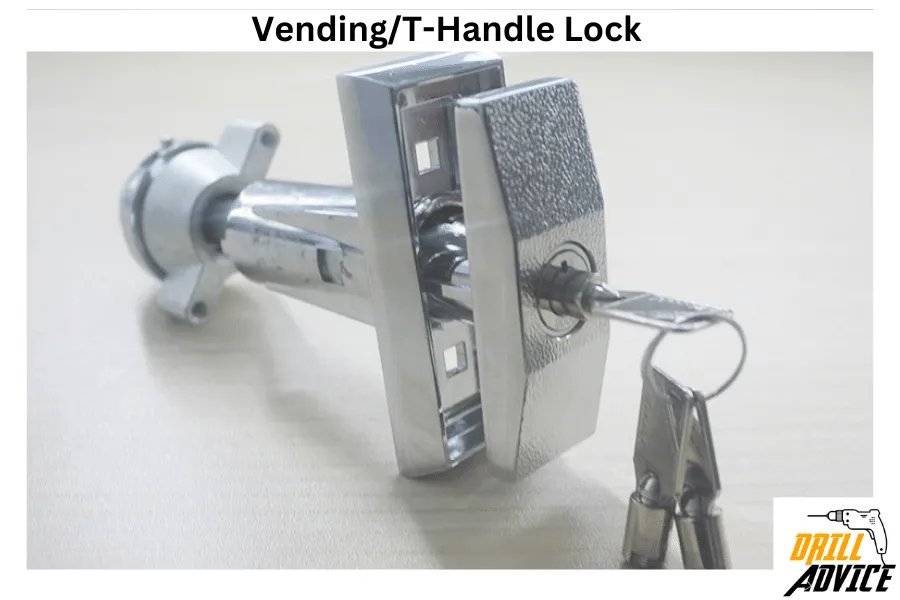
Vending or T-Handle locks are circular, rotating locks characterized by their T-shaped handle. They are specially designed for securing vending machines or display cabinets. Vending locks are predominantly used in vending machines, game machines, and glass display cabinets, offering a reasonable level of security against unauthorized access and tampering.
User experience of vending lock
- Vending locks offer an efficient and straightforward operation. Users can easily lock and unlock the mechanism with a simple turn of the T-handle. It provides a quick access to the contents.
Maintenance of vending lock
- T-handle lock require regular inspection for signs of tampering or wear.
- The locks should be cleaned and lubricated periodically to prevent jamming.
8. Rim/Mortise Locks

Rim/Mortise locks consist of both rim and mortise lock mechanisms. A rim latch lock is mounted on the surface of the door, while the mortise lock is installed inside a cavity in the door. These locks are often used in commercial settings, older residential buildings, and in entrance doors where a higher level of security is required.
User experience of mortise lock
- Rim/Mortise locks provide dual security. Hence it is a better protection than a single lock.
Maintenance of mortise lock
- Need regular maintenance by checking the alignment, and lubricating the moving parts.
9. Key in Knob (KIK) Cylinder Locks
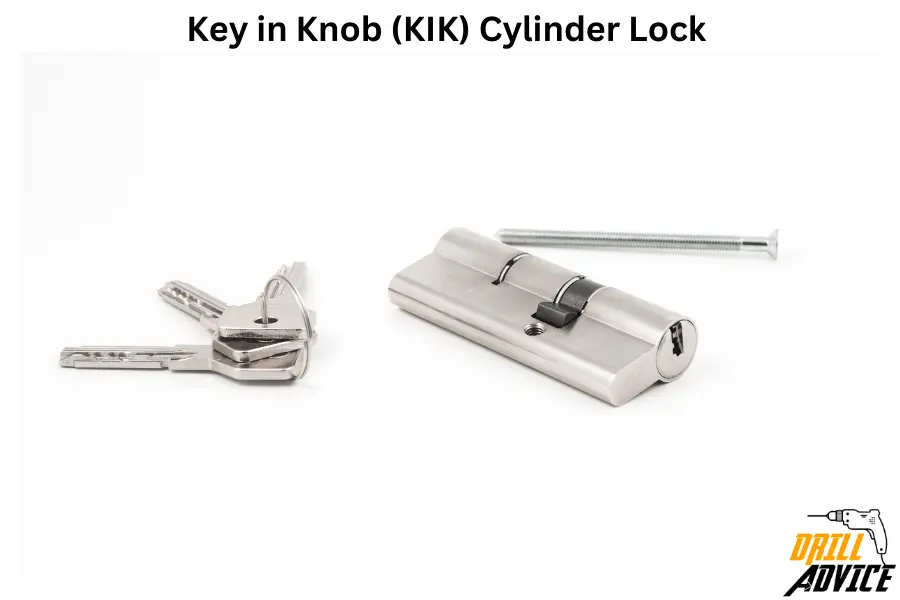
Key in Knob cylinder locks are a type of lock where the locking cylinder is housed within the doorknob itself. They operate with a key that controls a pin tumbler system to lock or unlock the mechanism. KIK locks are often used in residential buildings, typically on internal doors, as they may not provide the highest level of security compared to other lock types.
User experience of KIK cylinder lock
- These locks are user-friendly. It can be installed easily and operated. KIK locks are suitable for areas where high security is not necessary.
Maintenance of KIK cylinder lock
- Need regular maintenance for cleaning the cylinder to prevent dust accumulation and lubricating the internal components to ensure smooth functioning.
10. Electronic Locks/Smart Locks
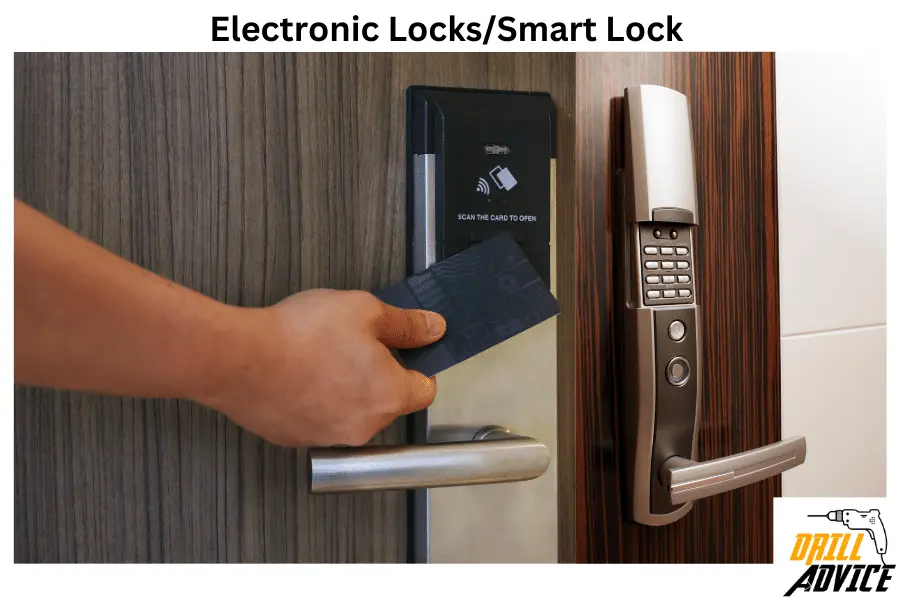
Electronic or smart locks are modern lock systems that operate without traditional keys. They use digital keys or codes and are often controlled through smartphones or other smart home devices. Smart locks offer enhanced security and convenience features. Smart locks are widely used in contemporary residential and commercial setups for main doors. Smart locks offer features like remote access, monitoring, and integration with other smart home systems.
User experience of electronic lock
- Smart locks are highly convenient as they allow for keyless entry, remote control, and easy customization of access codes. They often offer features such as temporary codes for guests and alerts for unauthorized access attempts.
Maintenance of electronic lock
- Smart locks require occasional battery replacements and firmware updates to ensure optimal functionality. It’s also essential to ensure that the corresponding software or apps are up-to-date to benefit from the latest security features.
11. Keypad Locks
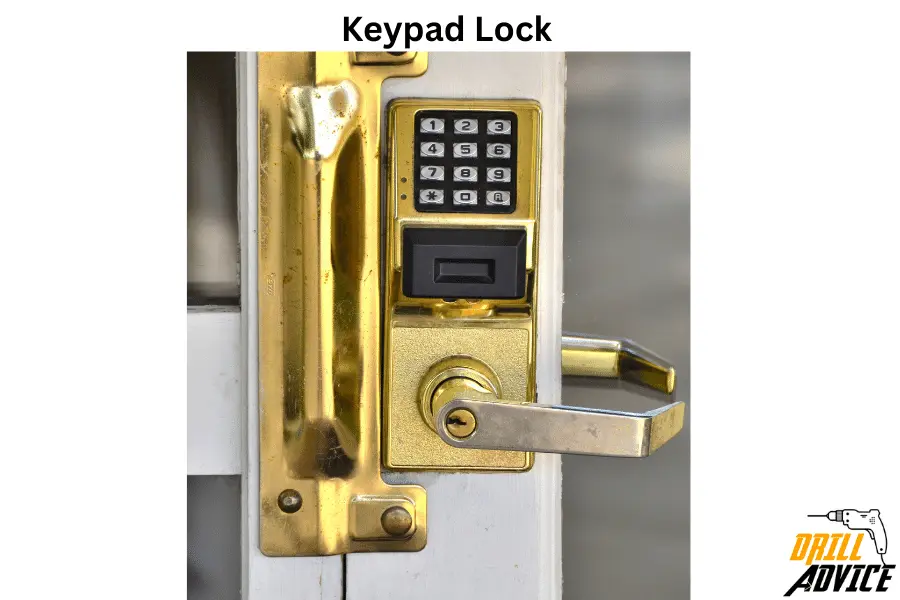
Keypad locks are electronic locks. Keypad locks can lock or unlock doors by entering a numerical code on a keypad. Keypad locks are used in both residential and commercial buildings. These locks are a secure and convenient option for entry doors, and office doors
User experience of keypad locks
- Keypad locks offer an enhanced user experience by allowing easy access without the need for carrying keys. The option to set multiple codes makes it convenient for allowing temporary access to guests or service personnel.
Maintenance of keypad lock
- Need to change the access code regularly in order to maintain security.
- Need to change the batteries periodically.
- Keeping the keypad clean and protected from the elements can also ensure longevity and functionality.
12. Biometric Locks
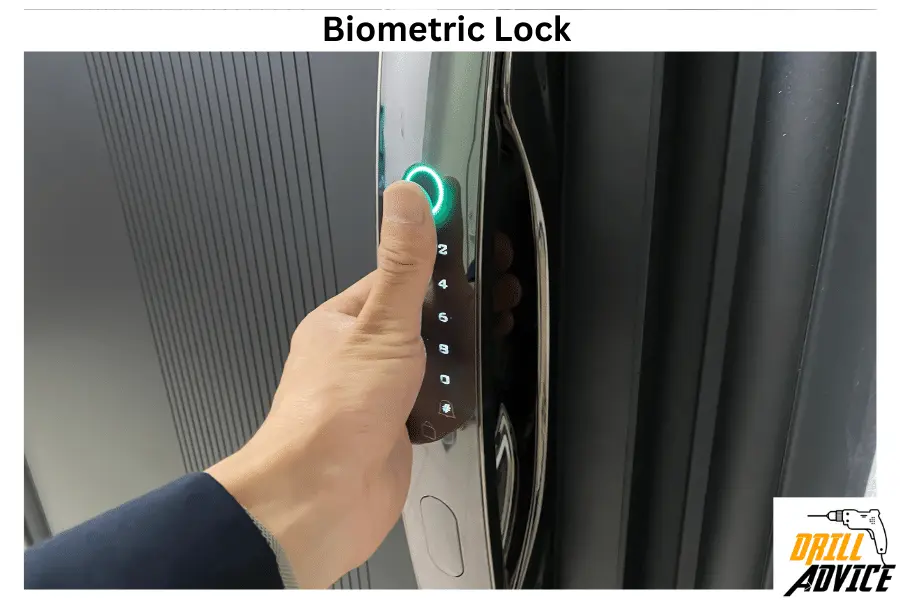
Biometric locks are security devices that use unique physical or behavioral characteristics such as fingerprints, eye scans, or facial recognition to authenticate users and grant access. Biometric locks are commonly used in high-security areas like office buildings, government facilities, and also in residential settings where need a higher security.
User Experience of Biometric Lock
- These locks provide an extremely high security experience. You do not need any key or code to access the door. Using your biometric data you can access easy.
Maintenance of Biometric lock
- Need a regular cleaning to remove the dirt on the sensor.
- You have to do software updates and data backups to maintain the efficiency and security of the system.
13. RFID Locks

RFID (Radio Frequency Identification) locks use wireless communication to identify, track, and manage access through security badges or keycards embedded with RFID chips. RFID locks are widely used in hotels, office buildings, and healthcare facilities.
User experience of RFID lock
- RFID locks offer a convenient and quick access solution. It allows to users to gain entry simply by presenting a card or badge to the reader. They facilitate easy management of access rights and tracking of entry and exit data.
Maintenance of RFID lock
- Regular system updates and checks are necessary to maintain security.
- Lost or stolen cards should be deactivated promptly to prevent unauthorized access.
- You have to clean the physical components like readers to function it correctly.
14. Bluetooth Locks

Bluetooth locks are a type of smart lock that uses Bluetooth technology to communicate with authorized devices like smartphones to lock or unlock doors. Bluetooth locks are often used in residential properties and hospitality industry setups, these locks provide a convenient and modern solution for secure access.
User experience of Bluetooth lock
- Bluetooth locks are convenient because they can be controlled through smartphones. The lock can be operated within the Bluetooth range.
Maintenance of Bluetooth lock
- Regularly update the software for optimal functionality and security.
- Replace the battery to prevent lockouts.
15. Furniture Locks

Furniture locks are types of locks that are designed to secure compartments within pieces of furniture, such as cabinets, drawers, and wardrobes, helping to protect valuables or restrict access to contents. Furniture locks are commonly used in office environments to secure sensitive documents and in homes to protect valuables or restrict access to potentially dangerous items (like medicines or chemicals) to children.
User experience of furniture lock
- Furniture locks are easy to use. Furniture locks are a simple and effective method to secure belongings within furniture units.
Maintenance of furniture lock
- Apply some lubrication to for smooth operation.
16. Padlocks
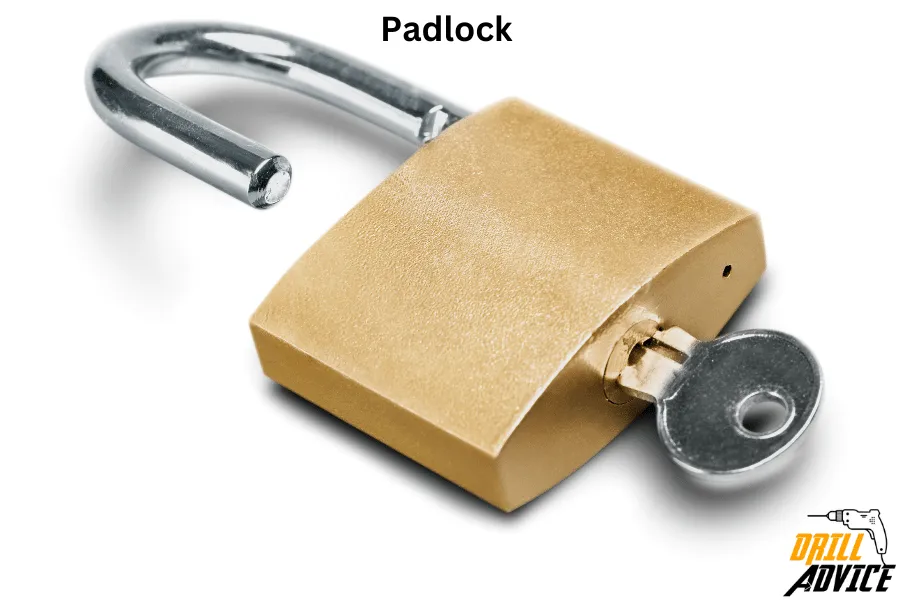
Padlocks are portable locks with a shackle that may be passed through an opening to prevent use, theft, vandalism, or harm. They come in various types, including combination and keyed variants. Padlocks are used to secure a range of items such as doors, gates, sheds, lockers, bicycles, and luggage.
User experience of padlocks
- Padlocks are easy to use and transport, offering a convenient method of securing belongings or property.
Maintenance of padlocks
- Padlocks have minimum maintenance. But when it gets wet, it can be corroded inside. Hence you should apply lubricants.
17. Combination Padlocks
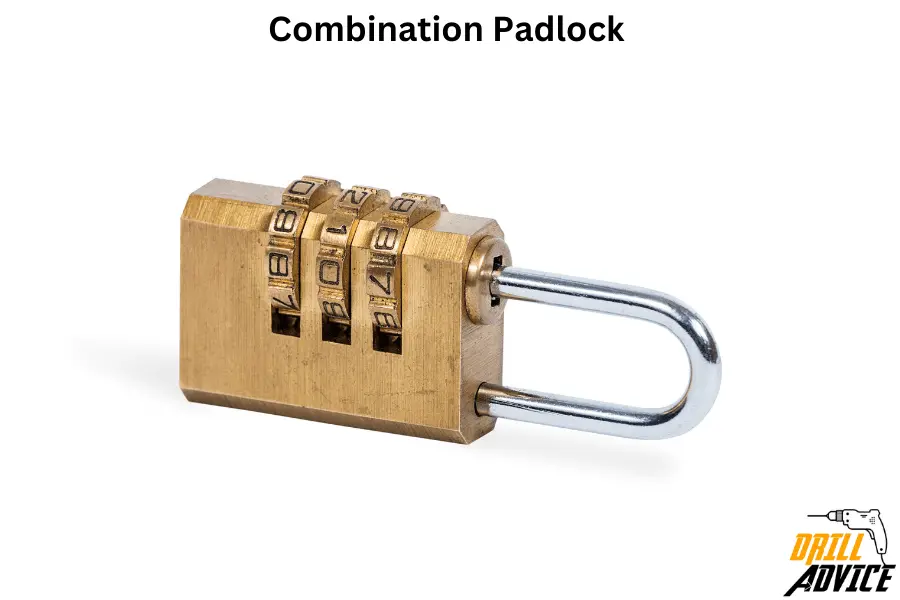
Combination padlock is a type of padlock that uses a rotary dial or series of discs with numbers to secure the lock. Users need to input the correct numerical code to unlock it. Combination padlocks are commonly used for lockers at gyms, schools, or workplaces and for luggages bags.
User experience of combination padlock
- Combination padlocks have a keyless operation. Butt users must remember the combination to unlock them. They are usually easy to set and reset combinations as per user preference.
Maintenance of combination padlock
- Use a graphite-based lubricant to keep the internal mechanisms functioning smoothly.
18. Rim Latch Locks

Rim latch locks are surface-mounted locks installed on the inside of doors, typically paired with a knob or lever. They automatically latch shut when the door is closed and can be locked with a key or a turnpiece from the inside. Rim latch locks are often used in older residential buildings internal doors or as supplementary lock for front doors, providing a basic level of security.
User experience of rim latch lock
- Rim latch locks offer easy and quick operation for users. They provide basic security and can be locked or unlocked swiftly.
Maintenance of rim latch lock
- These locks require occasional lubrication of the latch mechanism and periodic inspection to ensure proper alignment and functionality.
19. Barrel Bolt Locks
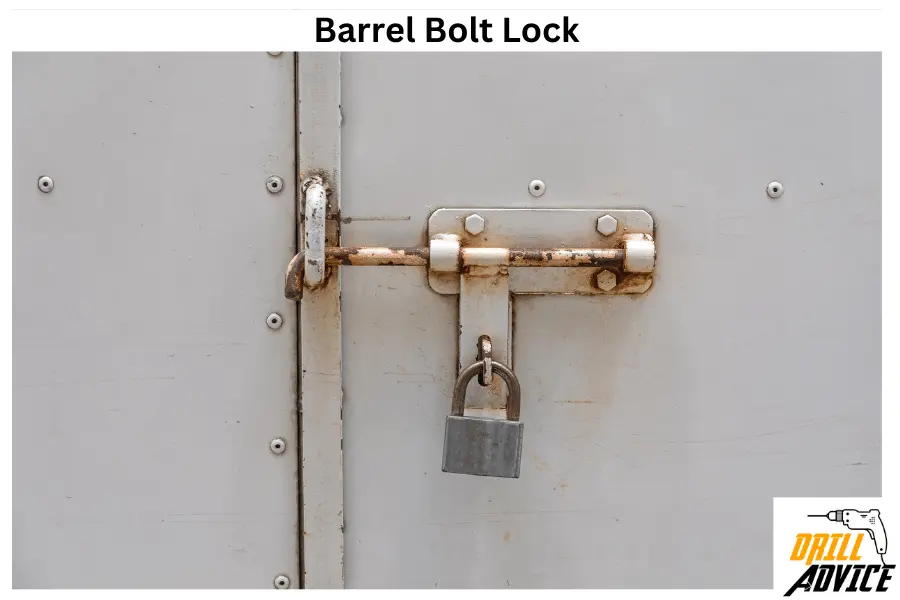
Barrel bolt locks, also known as slide bolts. Barrel bolt locks have a sliding bolt that fits into a socket on the door frame, allowing for the manual locking and unlocking of doors, generally from the inside. Barrel bolt locks are commonly used on bathroom doors, bedroom doors, and gates as supplementary lock to provide added security or privacy.
User experience of barrel bolt locks
- Barrel bolt locks can be operated easily.
Maintenance of barrel bolt locks
- Checks for the bolt slides smoothly and aligns correctly with the socket.
- Use lubricants to prevent the rusting on the surface and smooth operation.
20. Chain Locks
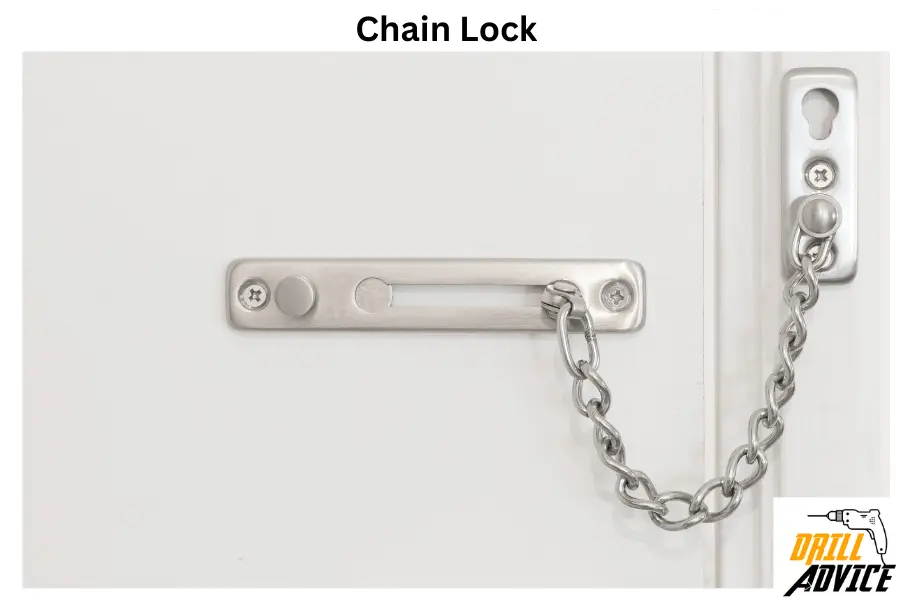
Chain locks consist of a chain attached to a door frame which can be released or secured onto a track on the door itself. Chain lock allows the door to be opened slightly to verify a visitor’s identity while still providing a level of security. Chain locks are often used in homes and hotels as an additional security measure to allow occupants to partially open the door to speak with someone outside without fully unlocking the door.
User experience of chain locks
- Chain locks are easy to install. Chain locks provide users with a simple way to add an extra level of security.
Maintenance of chain locks
- Check for the chain and the track are securely attached to the door and frame.
- The chain should be lubricated occasionally to prevent rust and ensure smooth operation.
21. Cylindrical Lever Locks
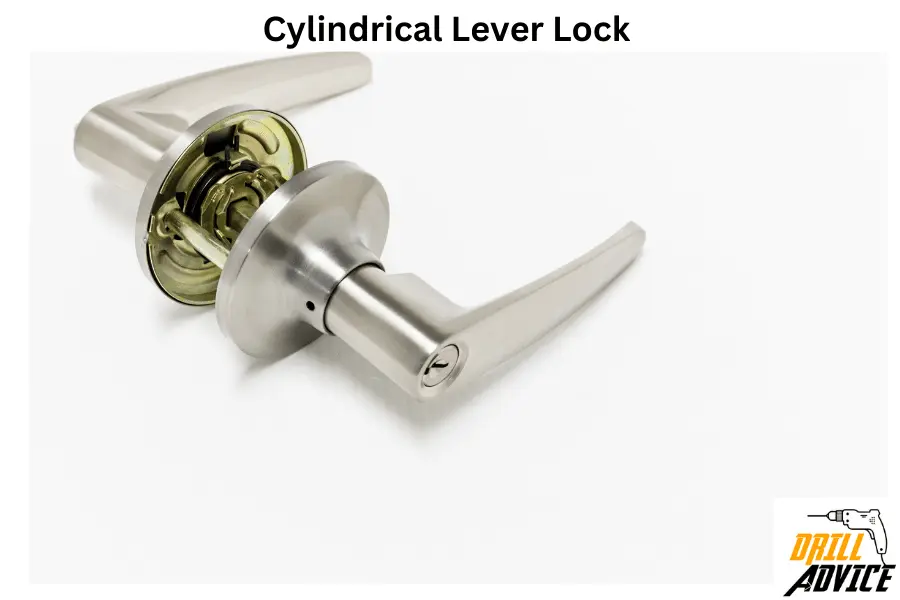
Cylindrical lever locks are door-locking systems where the lock cylinder is placed within the lever of the door handle. It allows for easy locking and unlocking using a key and the lever mechanism. Cylindrical lever locks are used in commercial buildings and offices for interior doors.
User experience of cylindrical lever locks
- Cylindrical lever locks are easy to operate.
Maintenance of cylindrical lever locks
- Regular maintenance should include cleaning and lubricating the cylinder and checking the screws and other hardware to ensure they are secure and in good condition.
22. Multi-point Locking Systems

Multi-point locking systems are locks that secure a door at multiple points along the frame. It can improve security compared to single-point locks. They are operated simultaneously using a single key or handle. Multi-point locking systems are used in residential front doors and patio doors, enhancing security by distributing the locking force at several points.
User experience of multipoint locking system
- These systems provide users with a high level of security due to loving the door in several points.
Maintenance of multipoint locking system
- Regular checking and lubricating is essential for smooth operations.
23. Sliding Door Locks
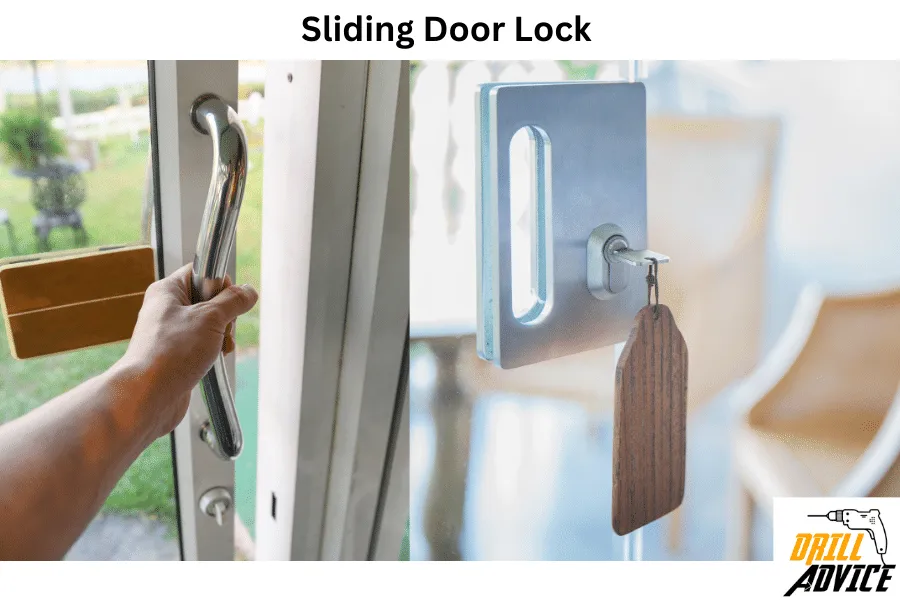
Sliding door locks are designed specifically for sliding doors. Sliding door locks have various mechanisms available, including bar locks, foot-operated locks, and double-bolt locks. Sliding door locks are widely used in homes and businesses for patio doors and other sliding glass doors.
User experience of sliding door locks
- These locks are generally user-friendly, allowing for quick locking and unlocking of sliding doors without compromising on security.
Maintenance of sliding door locks
- Clean the sliding door’s track and lubricate the lock mechanism to prevent wear and tear.
What are the Common Door Lock Problems?
These are 9 common door lock problems.
- Sticking Locks
- Difficulty Turning the Key
- Misaligned Door Latch
- Key Broken Inside the Lock
- Door Lock is Loose or Wobbly
- Deadbolt is Not Extending Fully
- Door Knob or Handle is Loose
- Faulty Lock Mechanism
- Issues with Electronic or Smart Locks
